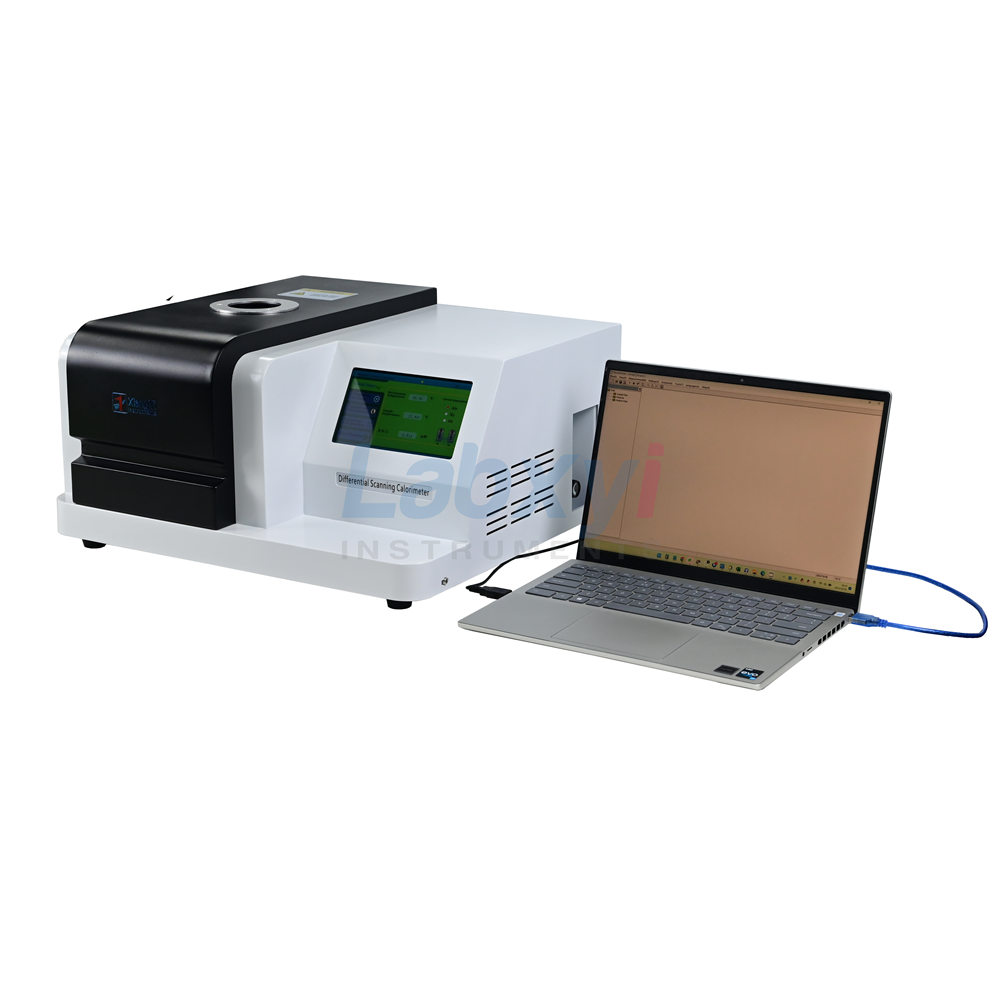Curing reaction refers to the chain reaction between epoxy functional groups and hardeners at appropriate temperatures. The degree of curing is a very important parameter of thermosetting polymer materials. Curing reactions are generally exothermic reactions. The amount of heat released is related to the type of resin functionality, the number of functional groups participating in the reaction, the type of curing agent and its dosage. However, for a resin system with a certain formula, the heat of curing reaction is certain.
The curing degree of PCB ink can be tested using a differential scanning calorimeter (DSC). A differential scanning calorimeter is a thermal analysis instrument that studies the thermal properties of materials by measuring the relationship between the power difference (in the form of heat) and temperature between the sample and the reference under program-controlled temperature. DSC can determine the curing reaction temperature and thermal effect of the material and understand the curing behavior of the material during heating.
In the PCB industry, the degree of curing of epoxy systems can be evaluated by DSC testing. For example, the industry standard believes that when ΔTg (the change in glass transition temperature) is greater than 5°C, the degree of curing of the material is not complete and needs to be improved; and when ΔTg is less than 5°C, the product is fully cured. In addition, DSC differential scanning calorimeter testing is sensitive and has good repeatability, which can easily determine the degree of curing.
Differential scanning calorimetry is one of the effective tools for testing the curing degree of PCB ink. It can provide important information about the curing behavior of the material, help optimize the production process and improve product quality.
1. Working Principle of DSC Differential Scanning Calorimeter
Heat flux DSC is a heat exchange calorimeter. The heat exchange between the sample and its surroundings can be measured through a specified heat conduction path with a given thermal resistance. The heat exchange paths include: disk type, turret type and cylinder type measurement systems. Among them, the disk type measurement system is more commonly used, and the heat exchange is carried out with the help of a disk supporting the solid sample. This system can quickly and accurately perform DSC measurements over a wide temperature range. DSC measurements need to be carried out in a specific atmosphere (such as nitrogen, oxygen, etc.). In a DSC with a disk measurement system, the main heat flows symmetrically from the furnace through the disk to the sample crucible and the reference crucible located on the disk. When the sample crucible is not loaded with a sample, the heat flowing into the sample crucible and the reference crucible is the same, usually expressed in the form of a potential difference, ΔT, which is relatively constant. If any phase change occurs in the sample, the steady-state equilibrium is broken, and a differential signal proportional to the difference in the heat flow rate of the two crucibles is generated.

2. Operation steps of DSC test PCB
- Sample preparation:
Take a certain amount of PCB sample and make sure the sample size is suitable for placing in the crucible of the DSC instrument.
- Measuring instruments
DSC3000 Differential Scanning Calorimeter
Instrument brand: Xiangyi Instruments Xiangtan Limited
- Instrument settings:
3.1. Start the DSC instrument and set appropriate test parameters, including heating rate (usually 10-20°C/min) and temperature range (e.g. 25°C to 280°C).
3.2. Ensure that the preparation of the reference material is consistent with that of the sample to avoid data errors.
- Testing process:
Place the sample in the sample chamber of the DSC instrument and start the test. The DSC will record the endothermic or exothermic reaction of the sample through temperature changes and generate a heat flow curve.
